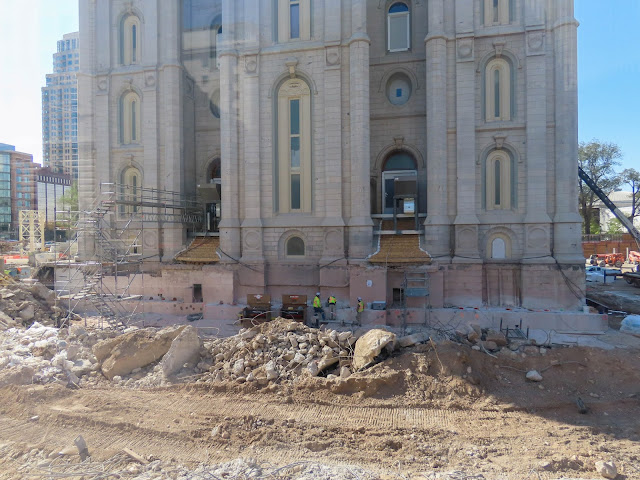This is a series of photos taken on October 9, 2020, of the renovation of the Salt Lake City, Utah Temple of The Church of Jesus Christ of Latter-day Saints. This first photo shows the complete demolition of the buildings on the north side of the temple including the former annex building. You can't see the buildings because they are gone. If you look at the left side of the photo you can see one of the doors to the temple with the staircase. It is about ten feet or so above the ground showing how much of the fill has been excavated and showing the foundation of the temple.
This photo shows the scaffolding around the spires of the temple.
This is the east side showing the doors and the excavation now showing the foundation of the temple more clearly.
This photo shows the southeast corner of the temple and shows more of the excavation and removal of the landscape and the Visitors Center building on the south of the temple lot.
Moving around to the southwest side of the temple you can see more of the lot with the landscaping and building structures removed.
This is more of the southwest side of the temple.
For more information about the reconstruction and renovation see, "First six months of Salt Lake Temple renovation reveal the project’s enormity."





























